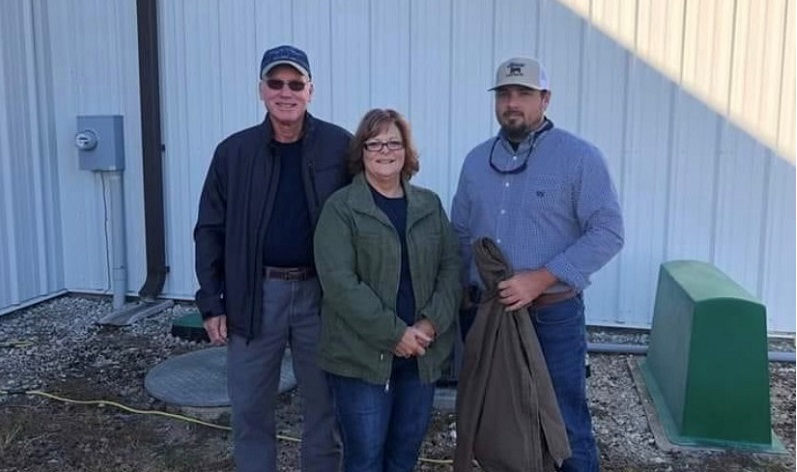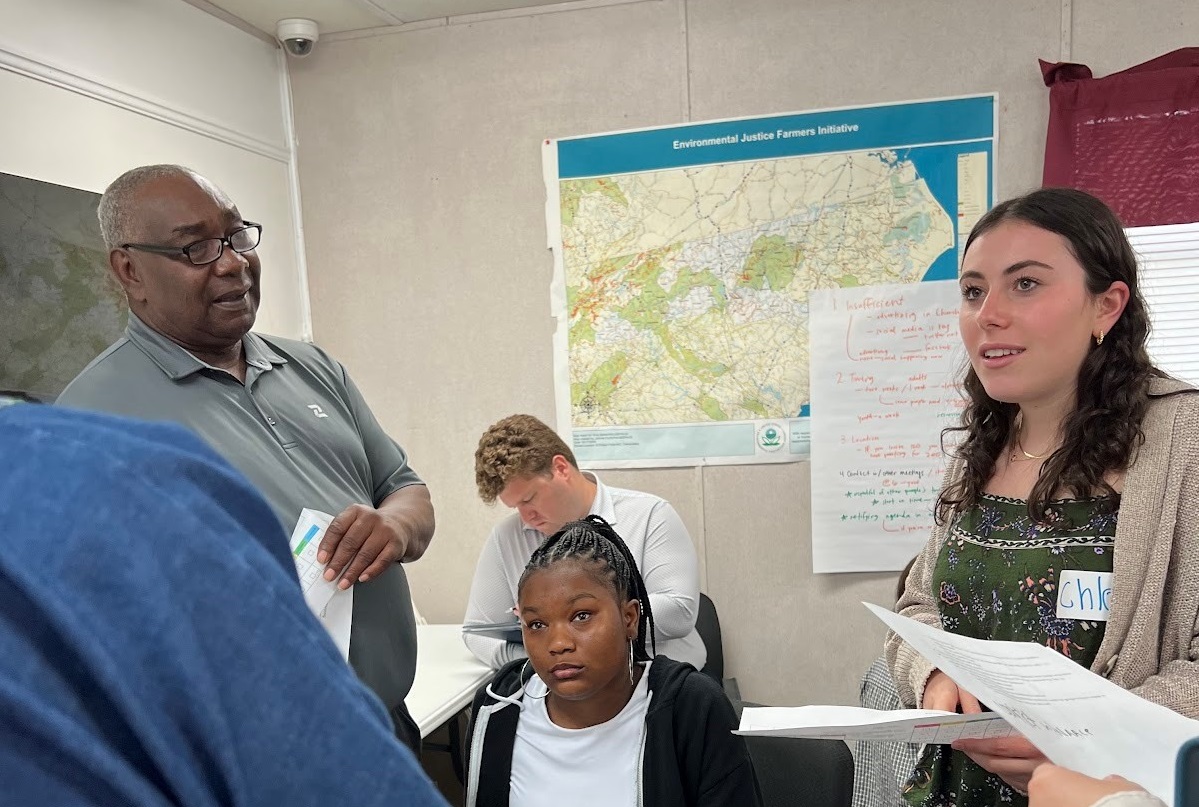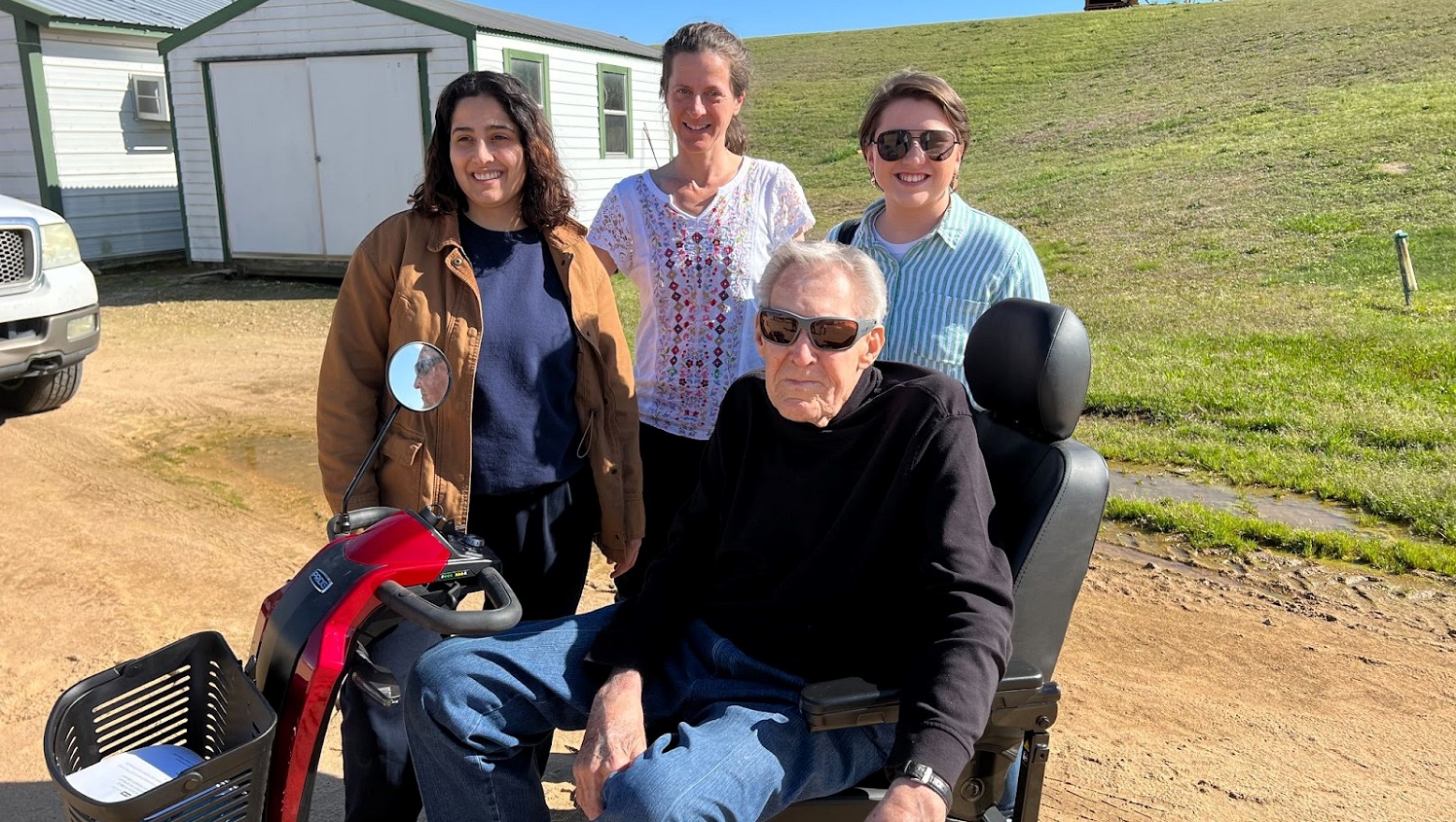Revisiting the CCC
This post was written by Olivia Smith, History MA student at NC State.
The course of historical study follows the trajectory of a pendulum. Slowly swinging back and forth, it consistently traces over ideas and movements expressed in the decades before. A topic will be en vogue, interesting and well-known by many, until the knowledge gradually slips away, unused and largely unshared by the next generation, who might possess only a vague sense of its details or ramifications. In recent years, this focus pendulum has not been kind to the Civilian Conservation Corps, especially within Virginia State Parks.
The Civilian Conservation Corps (CCC), a program established by President Franklin Delano Roosevelt in 1933 to combat the Great Depression, created Virginia State Parks. During a time of mass unemployment and widespread poverty, and when the United States’ fields and forests were wasting away overused and depleted, Roosevelt envisioned a common solution to both problems: putting the masses to work improving and protecting America’s forests. Active from 1933-1942, the men of the CCC, ages 18-25, planted billions of trees, built thousands of miles of roads, countless fire towers, bridges, and retaining walls, and created the infrastructure of parks, both national and state, at hundreds of sites throughout the country.
William Carson, the first chairman of Virginia’s Conservation and Development Commission, imagined a park system that provided the lower class with the same recreational opportunities as people of means, devising a plan to build a park within fifty miles of every citizen of Virginia. Through a great deal of philanthropy and some budgetary allotments, land for six parks throughout the varying natural wonders of Virginia was acquired. CCC men, grouped into military-style camps, started work on what would become Westmoreland State Park, in Virginia’s Northern Neck, Seashore State Park (now known as First Landing) in Virginia Beach, Staunton River State Park at the confluence of the Dan and Staunton Rivers, Fairy Stone State Park in the Blue Ridge, Hungry Mother State Park in Southwest Virginia, and Douthat State Park in the Allegheny Mountains. At all six of these parks, the roads, buildings, lakes, dams, bridges, trails, ditches, boat docks, and beaches were all constructed by the Civilian Conservation Corps. All six of the state parks were opened on the same day – June 15, 1936, realizing the dream of providing opportunities for recreation and leisure to Virginia’s common people.
As visitors stay in cabins, eat at the various restaurants, or bask on the beaches in these parks, the physical connection to the work of the CCC is inescapable. Unfortunately, however, despite interpretive walks, signage, and exhibits, the breadth of knowledge of the CCC thins more and more every year. Virginia State Parks have a wealth of information pertaining to the CCC, but valuable historical resources remain understandably inaccessible, as they are usually kept safe in a box or filing cabinet. As a result, this valuable history is gradually fading out of the consciousness of park staff until very few people know what they truly have or where it is. This summer, I set out to make Virginia State Parks’ CCC knowledge and resources more available and accessible in the present and to preserve them for future generations.
The Public History MA program at NC State requires an internship. I chose Hungry Mother State Park due to my history in the area, love of the outdoors, and passion for sharing knowledge through interpretive programming. From there, I was able to see firsthand how, despite the parks’ best efforts, the CCC fades from historical consciousness. In addition to physical resources being tucked away in storage, the older generation of park staff are the only ones with extensive knowledge of the CCC, learned primarily from oral traditions. I thus developed a project to scan and digitize all of our physical resources and conduct oral history interviews to capture and preserve the knowledge of our veteran employees.
My goal was to create a single, cohesive archive for CCC resources in Virginia State Parks. Making Hungry Mother State Park my base camp, I began by scanning and gathering information from their archives. I also conducted interviews with longtime Park Ranger Glenn Moorer and Joe Elton, the former director of Virginia State Parks, and his wife, Patty. From there, I took day trips to Douthat and Fairy Stone State Parks. Toting my huge scanner/printer along with me, I combed through their archives and scanned any CCC resources I could find.
In early August, I had the privilege of taking a week-long circuit around the state to visit the three other CCC parks. Visiting five parks in as many days, I conducted more interviews and dug through more archives. I visited entire regions I had never seen before, wiggled my toes in the ocean, and watched the sunrise over the Potomac River. I found a wealth of information, both documentary and oral evidence. All of these resources have now been digitized and comprise a single CCC archive. This archive will first become part of Virginia State Parks’ intranet platform, enabling all employees at all Virginia State Parks to access the historical resources and learn about the park system’s history. From there, I hope to make the digital archive available publicly, spreading knowledge and encouraging the ‘focus pendulum’ to swing back in favor of the Civilian Conservation Corps.
- Categories:


